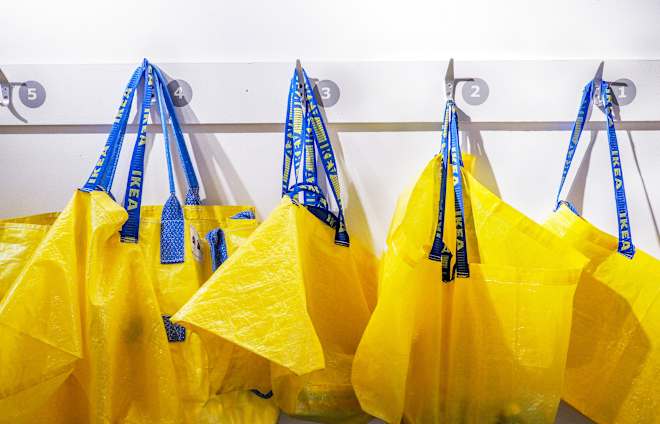The Supreme Court Has No Army
The judiciary has some tools to enforce presidential compliance, but their effectiveness depends ultimately on the vigilance of the American people.

A more direct affront to the rule of law is hard to imagine: About a month ago, federal agents secretly loaded three planes with passengers and spirited them away to a notoriously brutal prison in El Salvador. The operation was carried out quickly enough to prevent the passengers—now prisoners—from invoking their right, under the Constitution’s due-process clause, to challenge the legal basis for their removal from the country. The Supreme Court has since confirmed that this was unlawful, and the Trump administration itself has conceded that at least one of the passengers, Kilmar Abrego Garcia, was sent to the prison by mistake, in direct violation of an order by an immigration judge. But both the administration and the government of El Salvador now profess to have no power to return anyone who was wrongfully removed.
Nothing in the Trump administration’s legal logic would prevent it from snatching citizens off the street, sending them to a foreign prison for life, and then disclaiming the power to do anything about it. Judge J. Harvie Wilkinson, a distinguished appellate judge appointed by Ronald Reagan, wrote of the government’s position: “This should be shocking not only to judges, but to the intuitive sense of liberty that Americans far removed from courthouses still hold dear.” So far, however, the Trump administration continues along a path of stubborn resistance rather than accommodation, part of a broader pattern that is not confined to the deportation cases.
The situation raises a very basic question about our constitutional order: Can courts force a president to comply with their rulings? After all, the president commands the executive branch and the military. As one Harvard law professor has pointedly asked, “Why would people with money and guns ever submit to people armed only with gavels?”
[Quinta Jurecic: What recourse does the Supreme Court actually have?]
Although the federal courts have some tools to enforce compliance, their effectiveness depends on democratic cultural norms—and those norms in turn depend ultimately on the vigilance of the American people.
The judiciary does have a few “guns”—its own powers of coercion—to force recalcitrant executive officials to obey. A federal court can mandate officials to answer questions under oath and to sit for depositions. It can discipline government attorneys, including referring them for disbarment. It can impose escalating fines upon an official personally for each day an order goes disobeyed. It can order that officials be imprisoned. It can even set in motion criminal contempt cases against especially culpable officials. All of these measures, beyond their direct coercive effect, can do lasting reputational damage to the attorneys and officials involved.
Many of these tools are currently on display. Judge Paula Xinis, who is overseeing the Abrego Garcia case in Maryland, excoriated the Trump administration for doing “nothing” to bring the wrongly deported man home, and ordered several officials to answer questions under oath both in writing and in oral depositions. “There will be no tolerance for gamesmanship or grandstanding,” she said. Meanwhile, Judge James E. Boasberg in Washington, D.C., found that the administration had willfully violated his orders and that “probable cause exists to find the Government in criminal contempt.”
But what if the executive branch continues its defiance despite these or other sanctions? At that point, the courts could direct the U.S. Marshals Service to carry out their orders. The marshals have a statutory duty to do so. But the U.S. Marshals Service is part of the Department of Justice, which is under the supervision of Attorney General Pam Bondi. And Bondi, who is a named defendant in many cases against the administration, could instruct the marshals not to enforce an order against her or others in the administration. It is not clear how individual marshals would resolve a conflict between their statutory obligation and an order from the attorney general. Donald Trump could also try to thwart any contempt prosecutions, or simply pardon officials accused of criminal contempt. These uncertainties reflect something Alexander Hamilton observed long ago: The judiciary “must ultimately depend upon the aid of the executive arm even for the efficacy of its judgments.” That becomes an issue when the executive arm is the target of its judgments.
So the judiciary’s coercive power alone can’t guarantee that the executive branch will obey court judgments. And yet presidents have historically done so. Why? Because there is an unbroken norm, stretching back at least to the Civil War and followed by both parties, that presidents comply with court orders. The glue of constitutional democracy is not the U.S. Marshals Service but a political culture that demands respect for the rule of law. Because of this culture, the very threat of contempt has the power to shame officials into compliance with the courts.
History is full of examples of this culture in action. When the Supreme Court ordered President Richard Nixon to hand over tapes recorded in the Oval Office, Nixon voluntarily complied; the Court did not need to coerce compliance through contempt sanctions. Nixon resigned soon after. Similarly, when the Supreme Court in the famous Youngstown case ruled that President Harry Truman had unlawfully seized the steel mills during the Korean War, Truman voluntarily—and immediately—complied with the ruling, despite strenuously disagreeing with it. Again, what caused Truman to submit to the Court’s judgment was not the U.S. marshal knocking on his door but a shared commitment to self-government under a constitution.
[Stephen I. Vladeck: What the courts can still do to constrain Trump]
William Rehnquist, the future Supreme Court chief justice, was a law clerk to Justice Robert H. Jackson the year that Youngstown was decided. He later wrote that the “tide of public opinion,” which had turned against the government, “had a considerable influence on the Court.” One lesson from past cases is that, in a constitutional democracy, public opinion is the bedrock on which rests the norm of official compliance with federal court judgments. Recent polling suggests that this norm is still robust and bipartisan, though with some alarming cracks. Public opinion is not a one-way street: The courts can influence and inform public opinion not only through their orders but also through hearings and discovery that make plain the government’s misconduct.
A second lesson is that the courts need to be clearer in their directives. The Trump administration has shown that it is willing to twist any arguable ambiguity in a court order to its advantage—such as, in the Abrego Garcia case, the government’s implausibly narrow interpretation of facilitate. The courts should respond by making their directives unmistakably clear. The Supreme Court seems to be moving in that direction; in an unequivocal order issued in the middle of the night over the weekend, it flatly prohibited further deportations from a district in Texas under the 18th-century Alien Enemies Act.
Finally, the political branches matter too. Open defiance of an order from the Supreme Court would be grounds for impeachment. Any indication from Republicans in Congress that such defiance will not be tolerated—communicated publicly or through back channels to the administration—would help ensure that it does not happen.
In the end, courts can do a lot to protect our constitutional values and liberties, but they can’t do everything. As Judge Learned Hand once famously said, “Liberty lies in the hearts of men and women; when it dies there, no constitution, no law, no court can even do much to help it.” We all have a role to play in seeing that it does not die.






































































